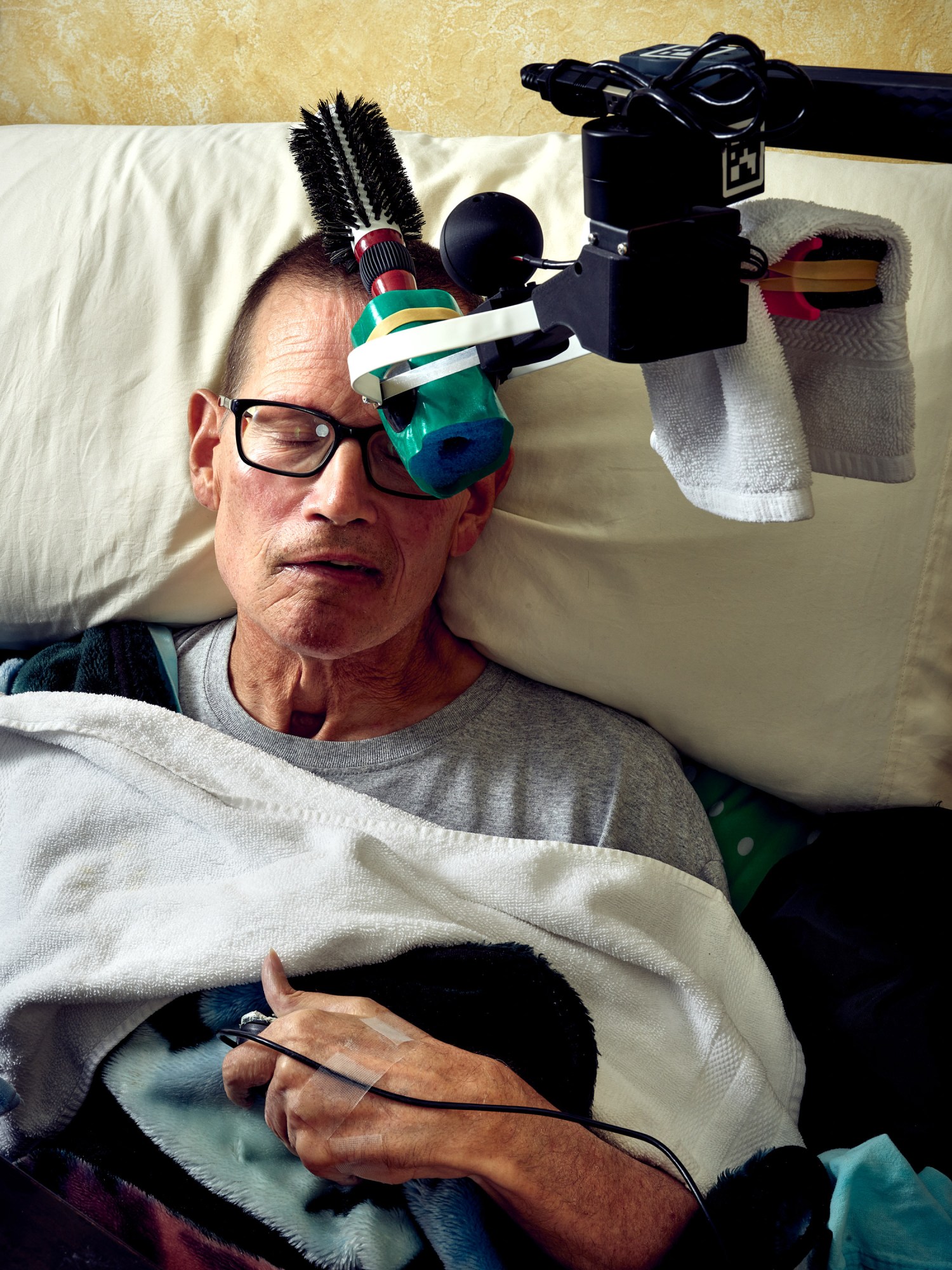Stretch weighs about 50 pounds. It has a small mobile base, a stick with a camera dangling off it, and an adjustable arm featuring a gripper with suction cups at the ends. It can be controlled with a console controller. Henry controls Stretch using a laptop, with a tool that that tracks his head movements to move a cursor around. He is able to move his thumb and index finger enough to click a computer mouse. Last summer, Stretch was with the couple for more than a month, and Henry says it gave him a whole new level of autonomy. “It was practical, and I could see using it every day,” he says.

PETER ADAMS
Using his laptop, he could get the robot to brush his hair and have it hold fruit kebabs for him to snack on. It also opened up Henry’s relationship with his granddaughter Teddie. Before, they barely interacted. “She didn’t hug him at all goodbye. Nothing like that,” Jane says. But “Papa Wheelie” and Teddie used Stretch to play, engaging in relay races, bowling, and magnetic fishing.
Stretch doesn’t have much in the way of smarts: it comes with some preinstalled software, such as the web interface that Henry uses to control it, and other capabilities such as AI-enabled navigation. The main benefit of Stretch is that people can plug in their own AI models and use them to do experiments. But it offers a glimpse of what a world with useful home robots could look like. Robots that can do many of the things humans do in the home—tasks such as folding laundry, cooking meals, and cleaning—have been a dream of robotics research since the inception of the field in the 1950s. For a long time, it’s been just that: “Robotics is full of dreamers,” says Kemp.
But the field is at an inflection point, says Ken Goldberg, a robotics professor at the University of California, Berkeley. Previous efforts to build a useful home robot, he says, have emphatically failed to meet the expectations set by popular culture—think the robotic maid from The Jetsons. Now things are very different. Thanks to cheap hardware like Stretch, along with efforts to collect and share data and advances in generative AI, robots are getting more competent and helpful faster than ever before. “We’re at a point where we’re very close to getting capability that is really going to be useful,” Goldberg says.
Folding laundry, cooking shrimp, wiping surfaces, unloading shopping baskets—today’s AI-powered robots are learning to do tasks that for their predecessors would have been extremely difficult.
Missing pieces
There’s a well-known observation among roboticists: What is hard for humans is easy for machines, and what is easy for humans is hard for machines. Called Moravec’s paradox, it was first articulated in the 1980s by Hans Moravec, thena roboticist at the Robotics Institute of Carnegie Mellon University. A robot can play chess or hold an object still for hours on end with no problem. Tying a shoelace, catching a ball, or having a conversation is another matter.
There are three reasons for this, says Goldberg. First, robots lack precise control and coordination. Second, their understanding of the surrounding world is limited because they are reliant on cameras and sensors to perceive it. Third, they lack an innate sense of practical physics.
“Pick up a hammer, and it will probably fall out of your gripper, unless you grab it near the heavy part. But you don’t know that if you just look at it, unless you know how hammers work,” Goldberg says.

